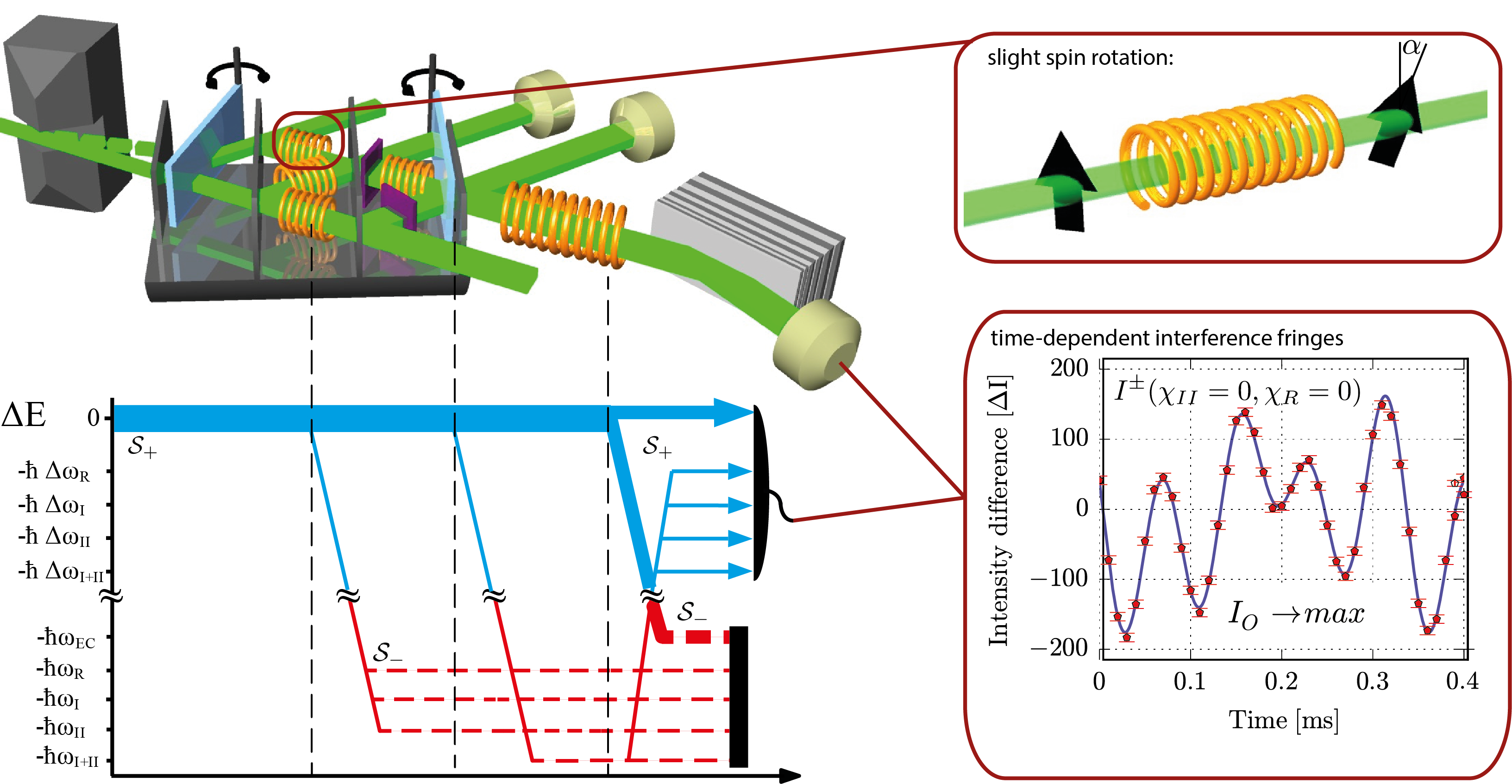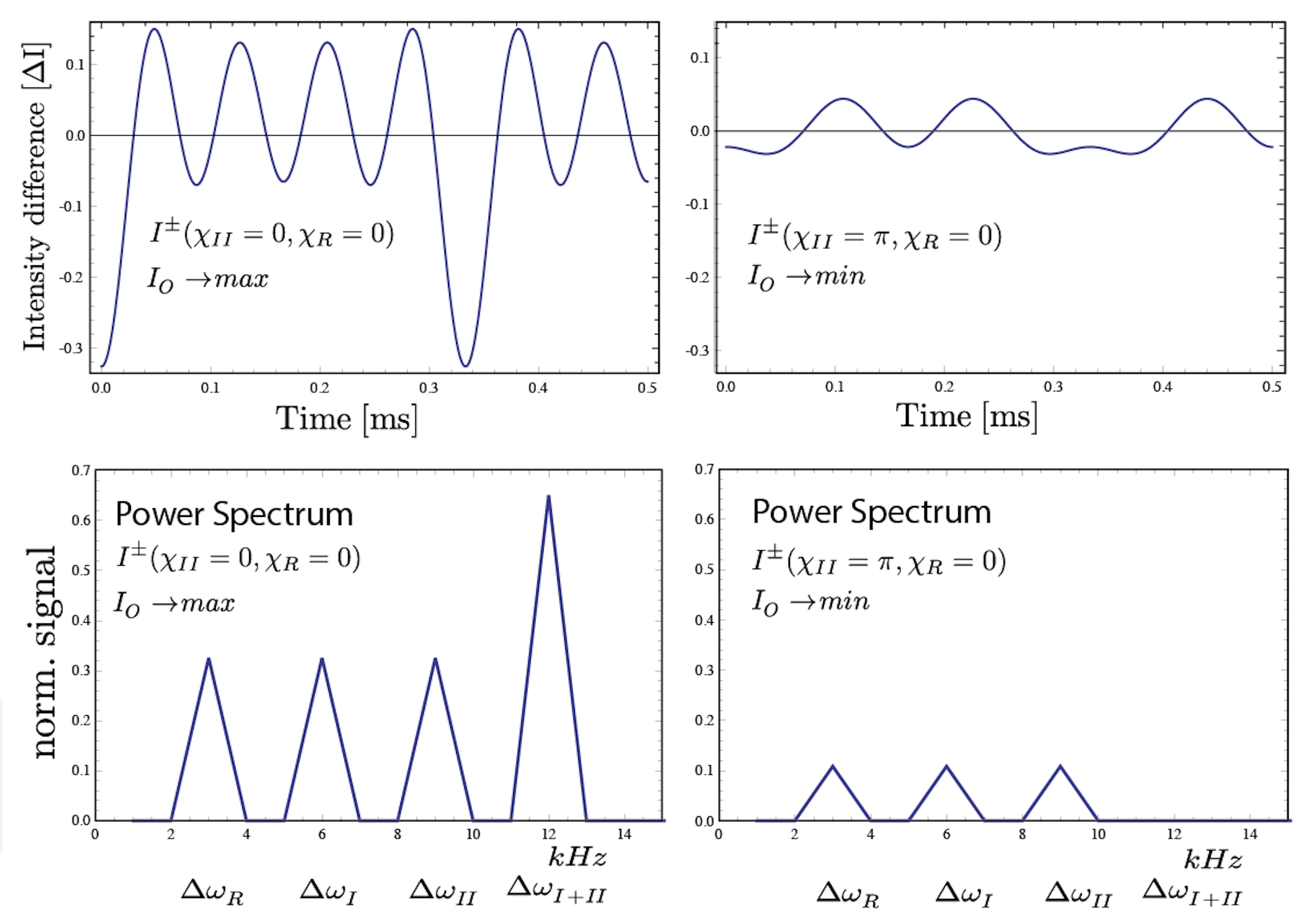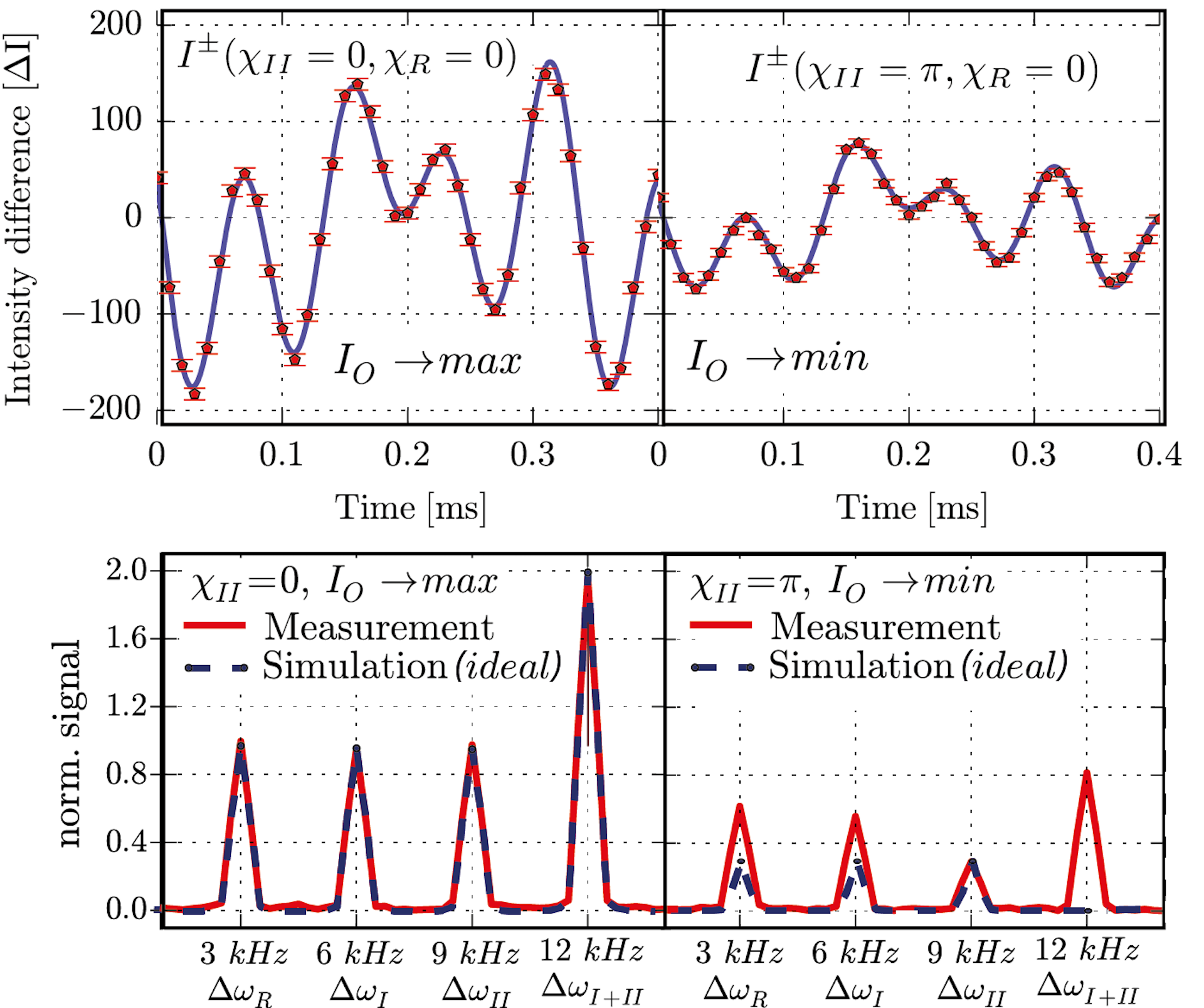Asking Neutrons where they have been – Details of the quantum particle’s wave function evolution
May 10, 2018 12:43 pmThe effect of the which-way (WW) marking (illustrated below) of the paths I, II and R on the neutron’s wavefunction is given by , for small , with . The induced energy shift results in a time dependent phase of . Abbreviation used such as phase shifter (PS), spin rotator (SR), guide field (GF), beam blocker (BB), energy compensation (EC), super-mirror spin-analyzer (SM) and detector (Det).

Furthermore, the wave function behind SR is given by , with . Behind the IFM an energy compensation is applied in path O aiming to reduce the overall energy shift of the WW marking to the differences between the frequencies. The explicit form of the final wave function behind the super-mirror is given by , or in compact form , with the energy-unshifted main component , and the energy-shifted components , i.e. the WW-signal, explicitely given by for , where and for and , respectively. The comes from the fact that the energy compensation rotes the spin by . The final, observed intensities in the detector thus is calculated as . In our experiment, particular attention is paid on two phase settings, (i) and (ii) (both with ). The intensities observed at the O-detector are calculated as (i) and for pahse setting (ii) , which is illustrated below for .

Taking the imperfect interference capacity of our interferometer into account we get (with we get the intensities from before). In the actual experiment we measured , and for the contrast parameters ). The actually measured time-dependent intensity oscillations are plotted below.
